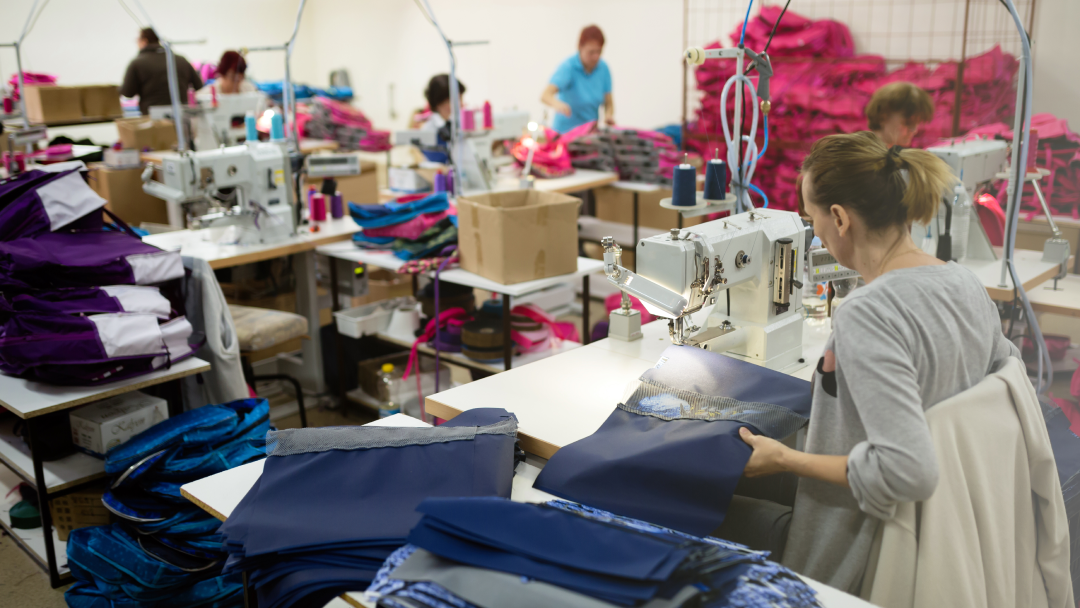The landscape of the clothes manufacturing industry has been significantly reshaped by the forces of globalization. As borders blur and economies intertwine, the impact of this phenomenon reverberates throughout every aspect of the sector. Globalization, characterized by the increasingly interconnected nature of economies and societies, has brought both unprecedented opportunities and formidable challenges to clothes manufacturers worldwide.
In this article, we delve into the profound transformations spurred by globalization within the clothes manufacturing sector. We will examine how this phenomenon has propelled the industry into new realms of growth and innovation, while also confronting companies with a myriad of complex hurdles to navigate. Through a comprehensive analysis, we aim to uncover the multifaceted effects of globalization on clothes manufacturers, shedding light on the dynamic interplay between opportunity and adversity in this ever-evolving landscape.
Opportunities Presented by Globalization

Globalization has emerged as a transformative force in the clothes manufacturing industry, reshaping traditional paradigms and fostering unprecedented growth opportunities. With the dissolution of geographical barriers and the interconnectivity of global markets, clothes manufacturers find themselves navigating an ever-evolving landscape of possibilities and challenges. At its core, this exploration aims to shed light on the dual nature of globalization: as a catalyst for innovation and expansion, yet also as a harbinger of formidable challenges that demand strategic navigation.
A. Access to Global Markets
The advent of globalization has heralded an era of unparalleled market access for clothes manufacturers, transcending geographical boundaries and facilitating seamless connectivity with consumers worldwide. Enabled by advancements in communication and logistics, companies now possess the capability to penetrate previously untapped markets with unprecedented ease. From the bustling streets of metropolitan cities to the remote corners of the globe, the reach of clothes manufacturers has expanded exponentially, ushering in an era of unprecedented market potential. Examples abound of companies leveraging globalization to successfully expand their market footprint, capitalizing on diverse consumer preferences and emerging trends to drive growth and profitability.
B. Cost Efficiency and Competitive Pricing
In the relentless pursuit of competitive advantage, globalization has empowered clothes manufacturers to harness cost-effective labor and resources from diverse corners of the world. The practice of outsourcing, once a mere strategy, has evolved into a cornerstone of operational efficiency, enabling companies to optimize production costs while maintaining competitive pricing in an increasingly saturated market. By strategically sourcing materials and labor from regions with comparative advantages, manufacturers can achieve economies of scale and operational agility, positioning themselves for sustained growth and profitability in the global marketplace.
C. Technological Advancements and Innovation
Central to the narrative of globalization’s impact on clothes manufacturing is the catalytic role it has played in fostering technological advancements and innovation within the industry. From automated production lines to cutting-edge manufacturing technologies, globalization has acted as a catalyst for the proliferation of innovation, driving unprecedented gains in efficiency, quality, and sustainability. By embracing emerging technologies, such as 3D printing, predictive analytics, and smart manufacturing systems, clothes manufacturers can unlock new frontiers of possibility, revolutionizing traditional production processes and redefining industry standards. Through a relentless pursuit of innovation, companies can position themselves at the vanguard of change, poised to seize the boundless opportunities that globalization affords in the dynamic landscape of clothes manufacturing.
Challenges Faced by Clothes Manufacturing

A. Outsourcing Risks
Despite its undeniable benefits, outsourcing presents a myriad of risks and challenges for clothes manufacturers. Chief among these concerns are the inherent vulnerabilities in quality control, as reliance on external suppliers introduces complexities that may compromise product integrity. Moreover, the threat of intellectual property theft looms large, exposing manufacturers to the risk of counterfeit goods and unauthorized replication of proprietary designs. Additionally, the dependency on external suppliers leaves manufacturers vulnerable to fluctuations in market conditions and geopolitical instability, underscoring the imperative for diligent risk management strategies to safeguard against unforeseen disruptions.
Outsourcing, while beneficial, comes with inherent risks such as quality control issues and intellectual property concerns. Manufacturers must choose reliable partners like OL Garments, known for their reputation and experience in clothing production, to mitigate these risks effectively.
B. Supply Chain Complexities
The globalization of the clothes manufacturing industry has precipitated a seismic shift in supply chain dynamics, ushering in an era of unparalleled complexity and interconnectedness. Navigating the intricacies of global supply chains entails grappling with a multitude of challenges, from navigating transportation logistics across vast geographical distances to optimizing inventory management in the face of fluctuating demand patterns. Moreover, the coordination of diverse stakeholders, spanning suppliers, manufacturers, distributors, and retailers, introduces a layer of complexity that demands meticulous attention to detail and robust communication channels. Examples abound of supply chain disruptions wreaking havoc on clothes manufacturing operations, from natural disasters disrupting production facilities to geopolitical tensions impeding the flow of raw materials and finished goods.
C. Ethical and Environmental Concerns
Amidst the relentless pursuit of profit and market expansion, clothes manufacturers confront a host of ethical and environmental dilemmas exacerbated by the forces of globalization. Chief among these concerns are the pervasive issues of labor exploitation and sweatshop conditions, as companies seek to capitalize on cheap labor in developing countries to drive down production costs. Moreover, the relentless pursuit of profit often comes at the expense of environmental sustainability, as the industry grapples with the ecological ramifications of mass production and textile waste. In response to mounting consumer demands and regulatory pressures, there is an urgent imperative for clothes manufacturers to prioritize ethical and sustainable practices throughout the supply chain. By championing fair labor standards, implementing eco-friendly manufacturing processes, and embracing transparency and accountability, manufacturers can navigate the ethical minefield of globalization while forging a path towards a more equitable and sustainable future for the industry.
Mitigating Challenges and Maximizing Opportunities:

In the face of the challenges posed by globalization, clothes manufacturers are adopting strategic approaches to mitigate risks and capitalize on emerging opportunities.
A. Diversification and Resilience Strategies:
Companies are actively diversifying their supplier base, embracing vertical integration, and implementing resilience planning to navigate the uncertainties of global markets. By diversifying suppliers across different regions and establishing backup production facilities, manufacturers can minimize the impact of disruptions and ensure continuity of operations. Furthermore, vertical integration, whereby manufacturers acquire or establish control over various stages of the supply chain, offers greater autonomy and flexibility in managing production processes and supply chain dynamics. Additionally, resilience planning involves proactive measures to identify and mitigate risks, ranging from geopolitical instability to natural disasters, thereby bolstering the industry’s ability to withstand unforeseen challenges.
B. Investment in Technology and Innovation:
Recognizing the pivotal role of technology in driving competitiveness and sustainability, clothes manufacturers are ramping up investments in innovation. By embracing cutting-edge technologies such as automation, artificial intelligence, and data analytics, manufacturers can enhance productivity, streamline operations, and optimize resource utilization. Moreover, technology offers unprecedented opportunities to address sustainability concerns, from eco-friendly manufacturing processes to waste reduction initiatives. By leveraging technology and innovation, manufacturers can unlock new efficiencies, improve product quality, and position themselves as leaders in the rapidly evolving landscape of clothes manufacturing.
C. Collaborative Initiatives and Industry Standards for Clothes Manufacturing
Collaborative efforts among stakeholders, including governments, businesses, and non-profit organizations, are pivotal in driving positive change within the clothes manufacturing industry. By forging partnerships and alliances, stakeholders can collectively address common challenges and promote ethical standards and sustainability practices. Governments play a crucial role in setting regulatory frameworks and incentivizing sustainable practices, while businesses can leverage their collective influence to drive industry-wide initiatives and standards. Non-profit organizations and advocacy groups serve as catalysts for change, raising awareness, advocating for reform, and holding stakeholders accountable for their actions. Through collaborative initiatives and adherence to industry standards, clothes manufacturers can collectively strive towards a more ethical, sustainable, and resilient future for the industry.
Navigating Globalization’s Impact with OL Garment

In conclusion, as we reflect on the impact of globalization on clothes manufacturing, it becomes evident that while the industry faces a multitude of challenges, there are also abundant opportunities for growth and innovation. By embracing diversification strategies, investing in technology and innovation, and fostering collaborative initiatives, clothes manufacturers can navigate the complexities of globalization while maximizing their potential for success. Readers of this article stand to gain valuable insights into the dynamics shaping the clothes manufacturing industry, equipping them with the knowledge and understanding needed to thrive in a globalized marketplace. For those interested in garment production, direct consultation with OL Garment offers a reliable solution, ensuring tailored expertise and support to meet specific needs. Simply fill out the Get in Touch form to receive personalized guidance and embark on a journey towards manufacturing excellence.
[FAQ]
- What should be considered when choosing the right clothing manufacturer?
When choosing a clothing manufacturer, it’s important to consider factors such as reputation, product quality, production capabilities, pricing, and compliance with ethical and environmental standards. Selecting a manufacturer with a strong track record and good reputation, like OL Garments, can instill confidence in the quality and service provided.
- How do I initiate a collaboration with a clothing manufacturer?
The first step in initiating a collaboration with a clothing manufacturer is to conduct thorough research to find a manufacturer that aligns with your company’s needs and values. From there, you can reach out to the manufacturer to start a dialogue, convey your product specifications, and discuss production requirements, timing, and costs.
- What are the benefits of outsourcing clothing production to external manufacturers?
Outsourcing clothing production to external manufacturers can offer various benefits, including lower production costs, access to expertise and latest technology, flexibility in production capacity, and greater focus on core business activities. Trusted and experienced manufacturers, like OL Garments, can help meet your production needs efficiently and effectively.
- How do clothing manufacturers manage global supply chains?
Clothing manufacturers manage global supply chains by paying attention to several key factors, including risk management, supplier diversification, use of advanced information and communication technology, and close collaboration with business partners across the supply chain. This helps mitigate risks and ensure smooth production operations.
- What should I do if there’s an issue with a clothing manufacturer?
If you encounter an issue with a clothing manufacturer, the first step is to communicate directly with them to identify the problem and seek solutions together. If the issue cannot be resolved through negotiation, you may consider legal options or find a replacement manufacturer that is more reliable. Hiring a manufacturer with a good reputation, like OL Garments, can help mitigate the risk of unwanted production issues.
